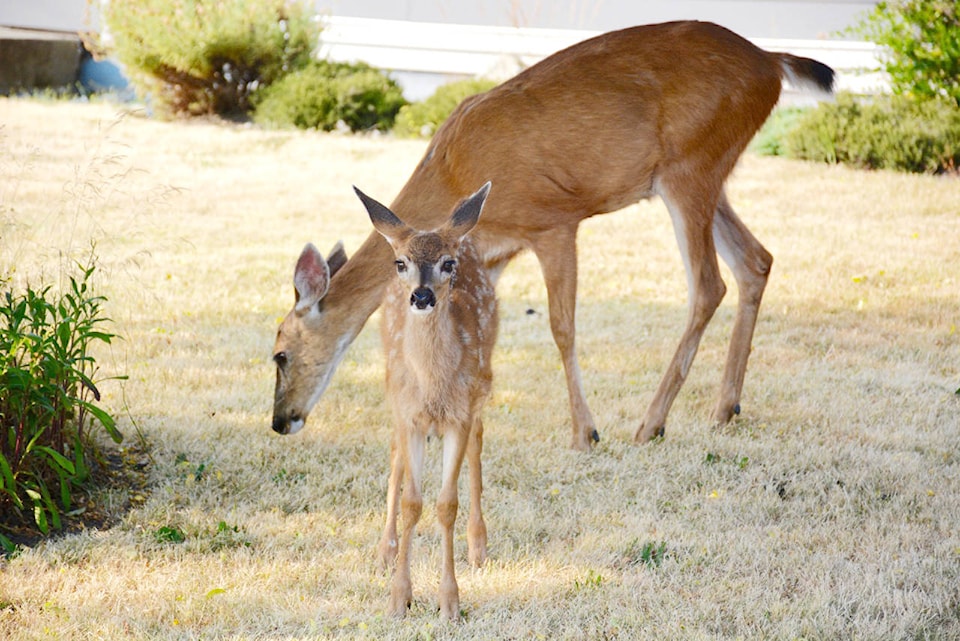With any wild urban species, understanding their nature and behaviour is vital to creating an informed approach to management.
From birds to raccoons to deer, each species has its own behaviours and urban adaptations; while some patterns will be replicated from region to region, others will be unique, and that’s why research-based information is key.
“What a person sees in one part of Esquimalt or Victoria may not be what people see elsewhere,” explains Kristy Kilpatrick, from the Urban Wildlife Stewardship Society. “Understanding ‘the big picture’ is essential for effective management; without knowing more about urban deer ecology, wildlife biologists assert that any deer reduction would function like an ineffective ‘folk remedy’ – not a solution.”
It’s also notable that while deer and fawns are more visible in summer than in winter, that’s not necessarily an indication their numbers are growing, Kilpatrick says, noting experts estimate that about 70 per cent of fawns don’t survive their first year, whether due to young, inexperienced mothers, severe weather or urban mishaps such as traffic collisions.
Kilpatrick is encouraged by Esquimalt’s research-based approach, including a commitment to three annual surveys to provide insight as to numbers, growth and population trends. The second survey gets underway this fall. “Esquimalt is on the right path for urban deer management – getting an understanding of the local deer ecology before undertaking management efforts,” she says.
How you can reduce conflict with urban deer
The same knowledge-based approach is good advice for individuals encountering urban deer.
For example, some interpret the defensive stance of a protective doe, likely with a fawn tucked away nearby, as intimidating, but this watchful behaviour is only meant to protect their young and is specific to the fawning season, Kilpatrick says.
“In fact, according to a recent CBC analysis of human-wildlife conflict in BC over the last two years, one is almost twice as likely to be injured by a raccoon as a deer,” she says.
Here’s a few things you can do:
• Because deer see dogs as predators, no matter their size or age, it’s essential to keep dogs leashed and walking close to you. If you see a deer, DO NOT release the leash.
• If a deer appears to be following you, try changing direction, crossing the road or heading back the way you came as you may unknowingly be approaching a hidden fawn, Kilpatrick advises.
• Avoid shouting or waving your arms, which can also be interpreted by the doe as predatory behaviour.
• Coming into fall, rutting season is also on the horizon, when bucks can become similarly more visible; similar approaches can help avoid conflicts.
For more information, visit uwss.ca. Learn more about Esquimalt’s deer management initiatives at esquimalt.ca.
